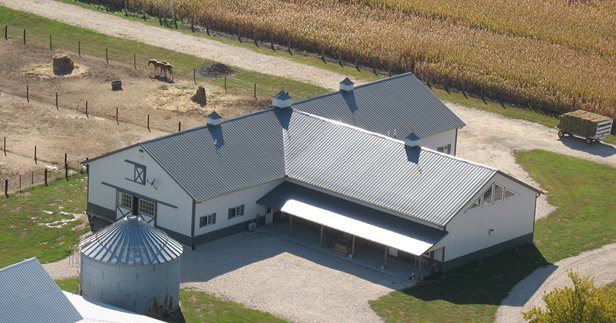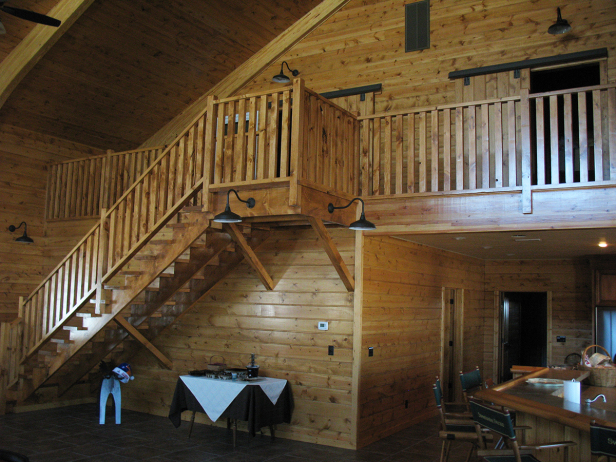Living with Your Horses: Horse Barns with Living Quarters
The case for building a horse barn with living quarters.
If living with your horses brings to mind Mary, Joseph and a manger, it’s time to stretch your imagination. Today, a horse barn with living quarters can be a comfortable and economical solution for housing horses and their humans.

Building is Best
Begin by considering your three options. Find an existing property for sale (scarce in most places), convert an existing barn (face strict residential building codes and cost overruns) or build your own structure, often the most economical choice. Here’s the case for pursuing the latter, from Todd Fisher, a Lester Buildings dealer based in Iowa.
“Building a new structure offers the most customization. Not only is every horse owner different, but horse breeds can have different needs, too.” Todd and his employer, K-Van Construction Company, have built several combo buildings, including those with stables, arenas and living quarters.
Getting a structure that suits your lifestyle is essential, adds Bob Johnson, an experienced Lester dealer in Illinois, who operates Bob Johnson Construction. “In 2011, we built a customized barn with living quarters for a veterinarian who wanted to keep a watchful eye on foaling mares via a huge picture window in the living room.” Recently, Bob has been fulfilling a more common request: horse barns with an 800-1,000 sq. ft. apartment for housing a hired hand.

An Insider’s Advice on Design
Todd and Bob offer this advice to people on the fence about building:
Don’t skimp on design/build – A professional, collaborative design process will ensure you stay in your budget; a correctly built structure will reduce maintenance costs down the road. In other words, don’t skimp when choosing a design-build company.
Build out, rather than up – Todd advocates building longer and wider to avoid stairs in the living quarters, especially if you plan on living the horse lifestyle into your golden years.
Never compromise ventilation – Avoid building a second story on top of horse stalls. Roof ridge vents over stalls are essential for moving air, odor, dust and dirt up and outside. If you live in a part of the country where it’s customary to have hay storage over the stalls, make sure you have proper roof heights and venting. Also, carefully consider placement of windows, doors and other ventilation options.
Fire prevention – In most cases – and if feasible — play it safe by housing feed, hay, bedding and power equipment in a separate building not attached to the main structure. Also incorporate fire walls between the barn and living quarters. These design elements will likely reduce your insurance premiums.
Distinct spaces – No matter how much you love your horses (and vice versa), maintain distinct separation between horse and human living spaces. This is especially true if you have a riding arena (more dust, dirt, noise, etc.).
Know your local codes — Local building codes, zoning laws and permit requirements vary by county. Working closely with your Lester dealer upfront can go a long way to prevent unwanted costs and delays down the road.
To see a complete library of horse barns with living quarters in your area, visit lesterbuildings.com.
